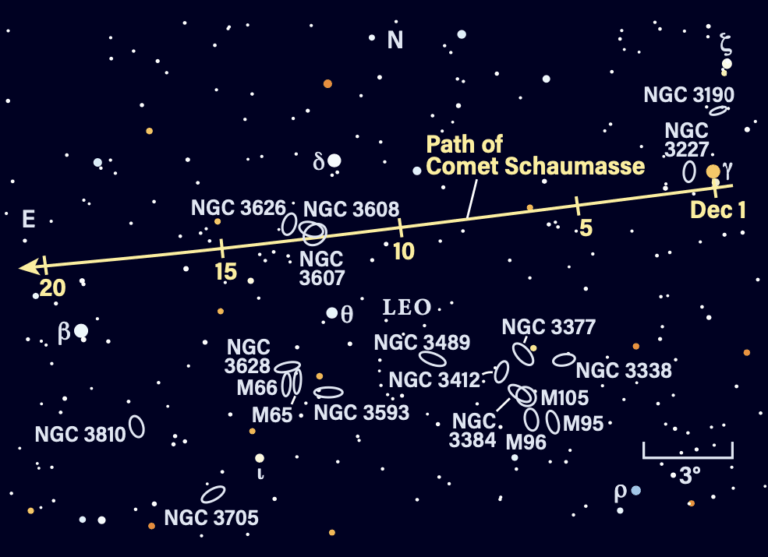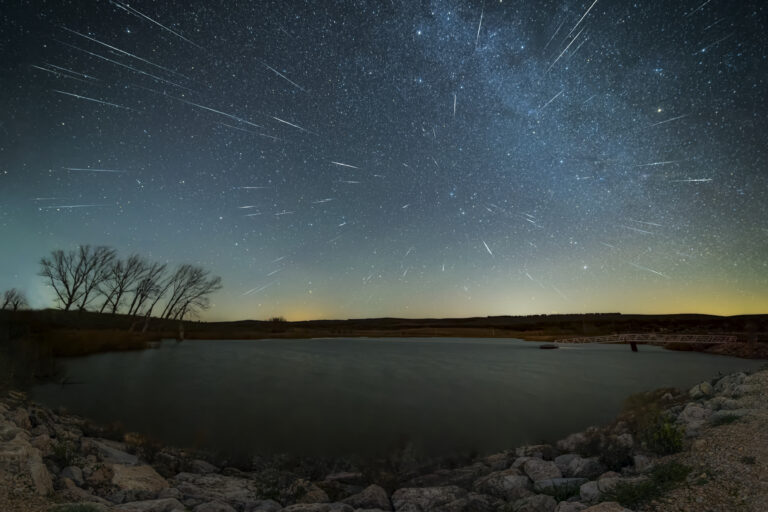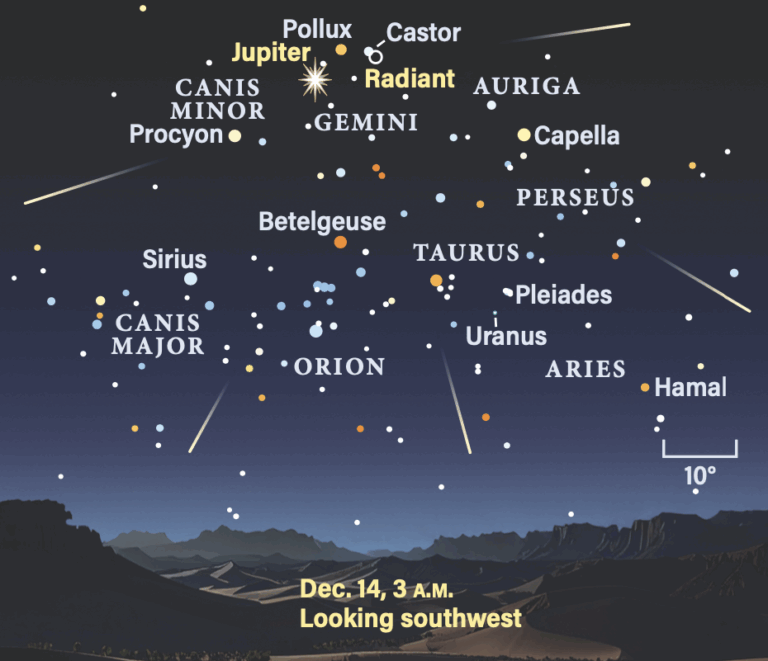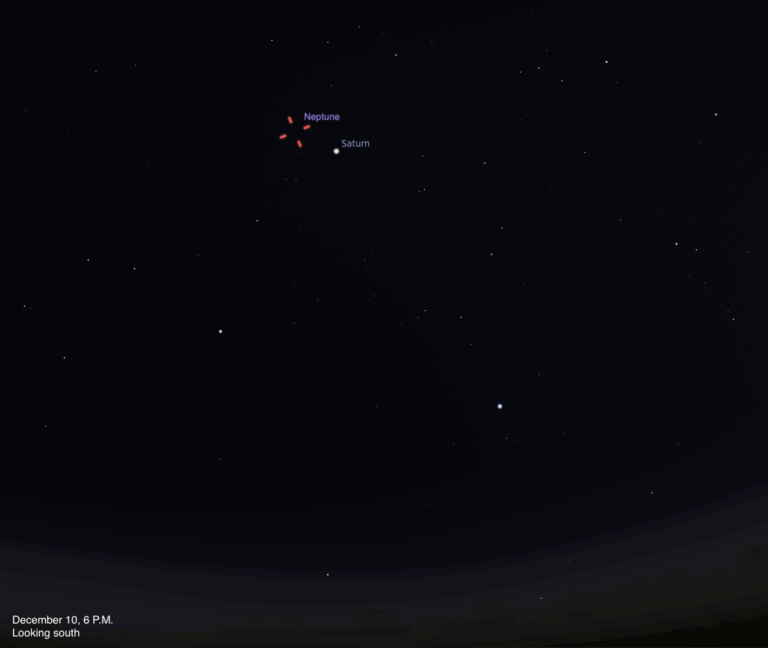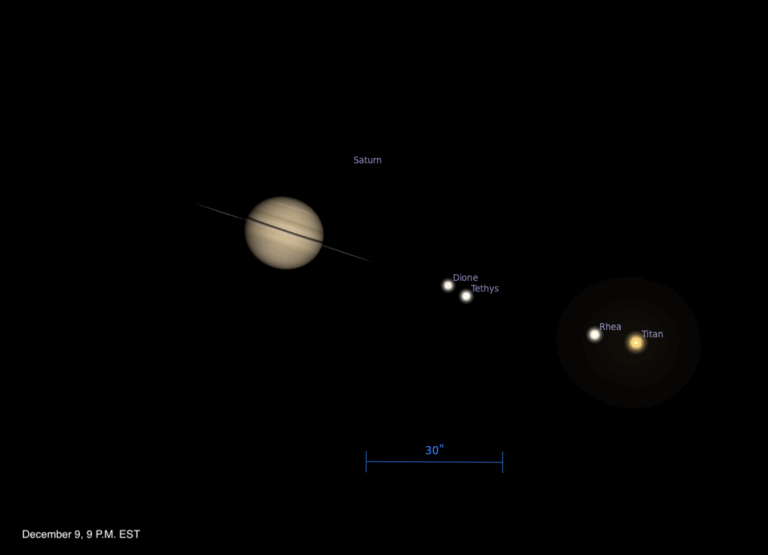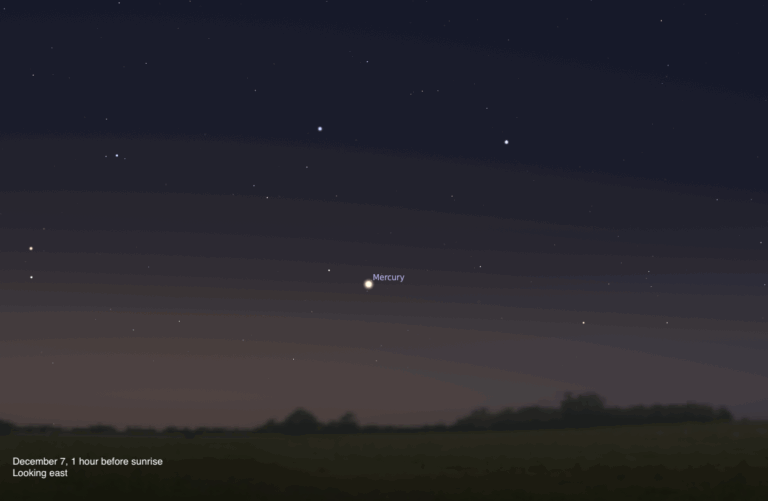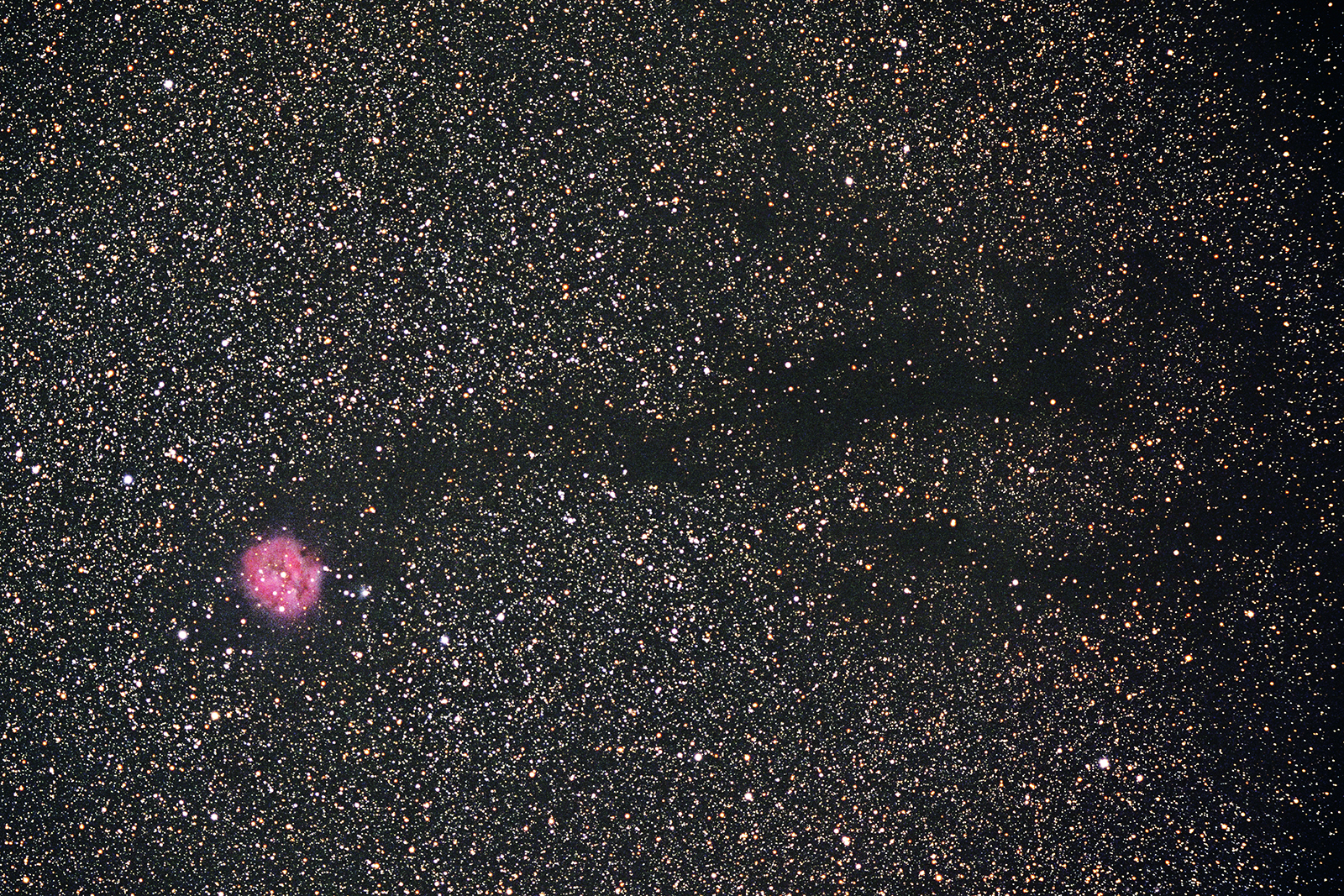
Credit: Michael Stecker
Key Takeaways:
- The Cocoon Nebula, an emission nebula spanning 12 arcminutes (1/5 degree) in the constellation Cygnus, is approximately 4,000 light-years distant and possesses a diameter of 15 light-years.
- This object overlaps the eastern boundary of Barnard 168 (B168), a prominent dark nebula, and centrally contains the 9th-magnitude star cluster cataloged as Collinder 470.
- Discovered by Thomas Henry Espinell Compton Espin in 1899, the nebula was first photographed by Maximilian Franz Joseph Cornelius Wolf in 1900, who detailed its unique surrounding "lacuna, void of faint stars."
- While its integrated light equals that of a 7th-magnitude star, the Cocoon Nebula's low surface brightness and entangled stars of Collinder 470 necessitate at least an 8-inch telescope and a nebula filter for enhanced visual perception.
Some deep-sky objects stand on their own. Others pair up with notable companions. Occasionally, the surrounding star field helps elevate a rather ordinary object’s status. Such is the case with the Cocoon Nebula a 12′-wide (1/5°) emission nebula in the constellation Cygnus the Swan.
The Cocoon Nebula overlaps the eastern edge of Barnard 168 (B168), one of the northern sky’s finest dark nebulae. From a dark site, sharp-eyed observers can pick up this murky lane without optical aid, but such a sighting isn’t easy. A better approach is to use large binoculars or a telescope with an eyepiece that provides more than a 1° field of view.
British astronomer Thomas Henry Espinell Compton Espin discovered the Cocoon Nebula on August 13, 1899. German astronomer Maximilian Franz Joseph Cornelius Wolf was the first to photograph it, in 1900. His description said, ‘‘It is placed centrally in a very fine lacuna, void of faint stars, which surrounds the luminous cloud like a trench. The most striking feature with regard to this object is that the star-void halo encircling the nebula forms the end of a long channel … to a length of more than two degrees.’’
In addition to the nearby dark nebula, the Cocoon also houses a cluster of 9th-magnitude stars cataloged as Collinder 470. The Cocoon lies approximately 4,000 light-years away. And it’s not small. It has a diameter of 15 light-years.
You can spot the Cocoon Nebula on a moonless night through a 4-inch telescope, but only as a circular blur. To find it, point your scope about 12° east of Deneb, Cygnus’s brightest star.
The Cocoon’s light equals that of a 7th-magnitude star, but the nebula’s surface brightness is low because it’s so spread out. Making matters worse, the stars of Collinder 470 lie entangled within the glow. For best results, use at least an 8-inch telescope and an eyepiece equipped with a nebula filter. The filter will suppress the starlight while still letting most of the emission nebula’s glow through to your eyes. Good luck!


